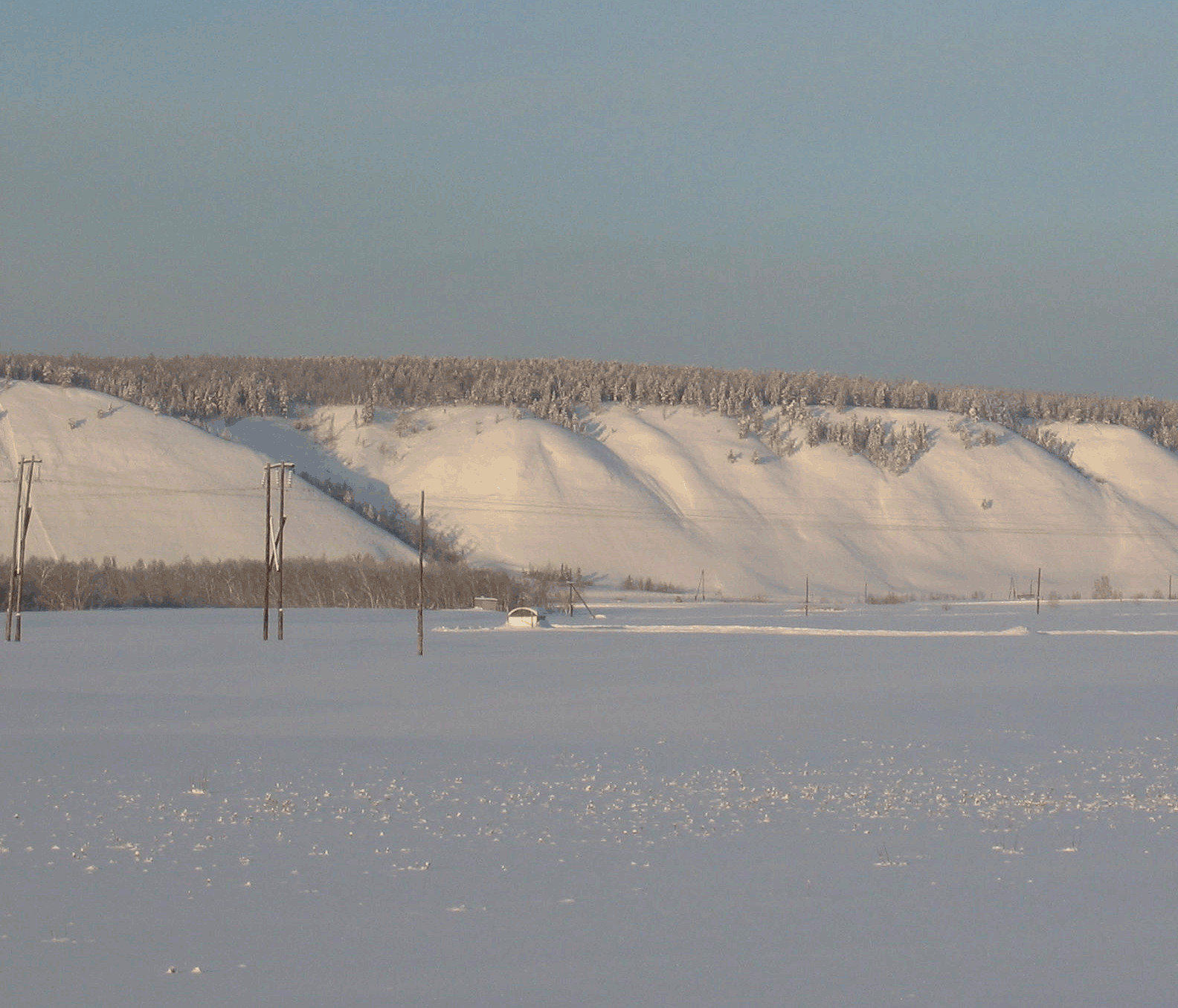Detectors
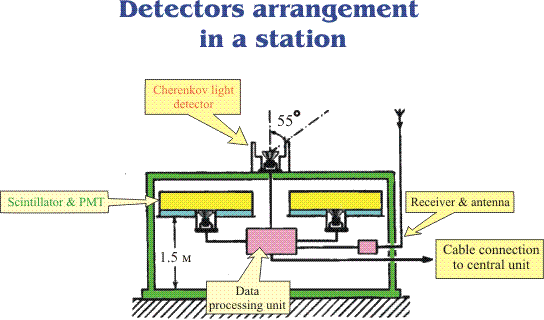
At present the array consists of 58 ground-based and 6 underground scintillation detector stations to measure charged particles (electrons and muons) and 48 detectors of the atmospheric Cherenkov light – photomultipliers in the shuttered housing.
In each station two detectors are mounted made of plastic scintillator (2 square meter area 5 cm thickness polysterene with ~2% PPP and ~0.02% POPO luminescent additions) in a metal container. A PMT is observing each plastic detector. On
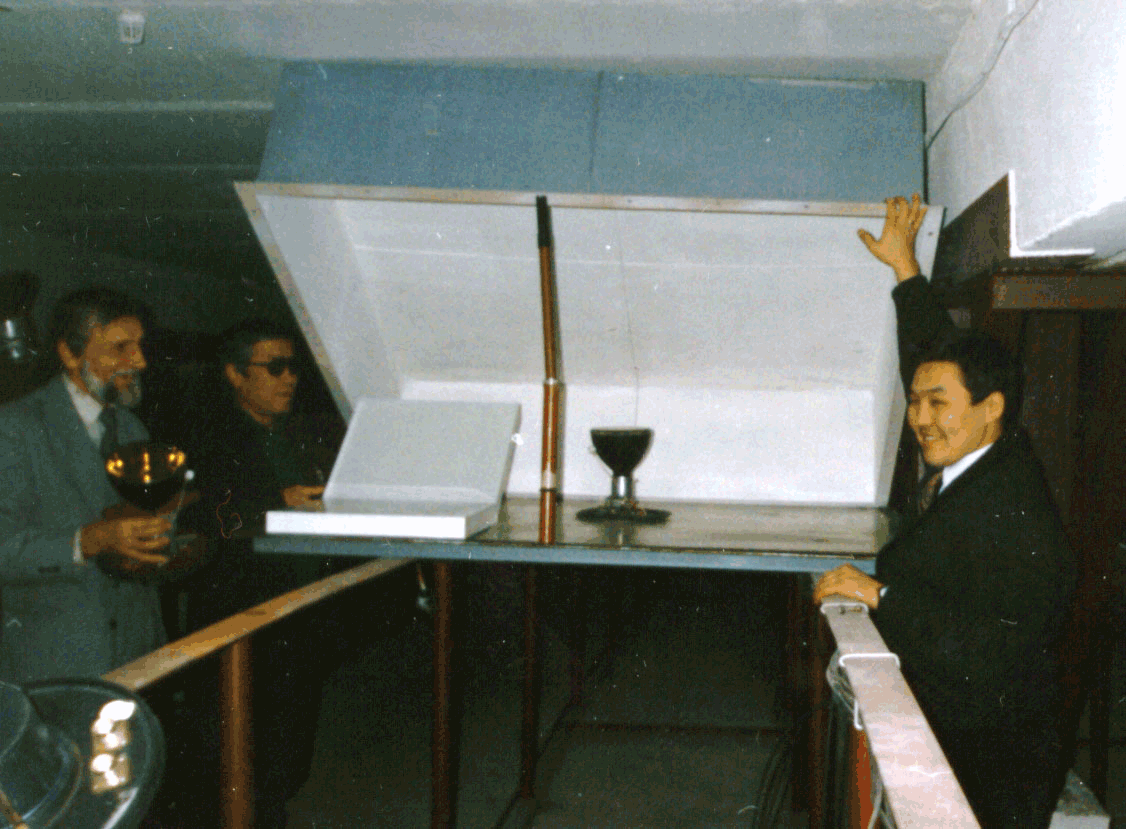
the station roof Cherenkov light detector is placed which consists of the vertically mounted PMT (FEU-49B, 15 cm diameter) with amplifier in a container blackened inside. Upper hole provides 550 aperture. To protect the photocathode from sunlight the motorized light-proof lid is set. At night, all lids of the array can be commanded remotely to open. PMTs and amplifiers are powered around-the-clock for the stability of characteristics. When lid is open, a fan blows with warm air to keep snow and dust out of the photocathode surface.
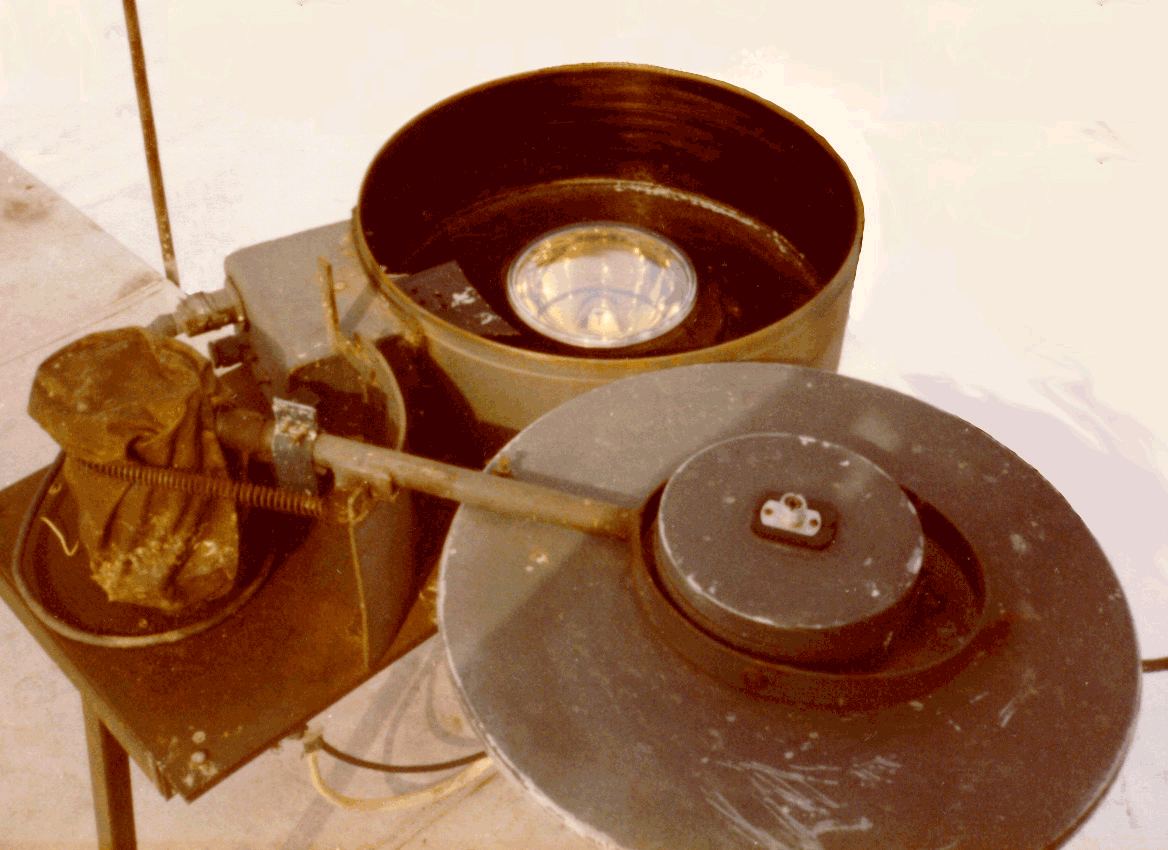
There is a variant of detector with three PMTs in a housing which can operate independently or in summation of signal in order to increase acceptance area at the shower periphery. In addition, dedicated detectors were used to measure the shape and width of the Cherenkov signal from the shower. These detectors were designed in Moscow University group.
There are five underground detectors of muons in a central part of the array consisting of ~20 square meter area plastic scintillator each. Detector design is similar to that in stations on the surface. The soil shield yields the threshold energy of muons ~1/cosq GeV (=109/cosq eV).
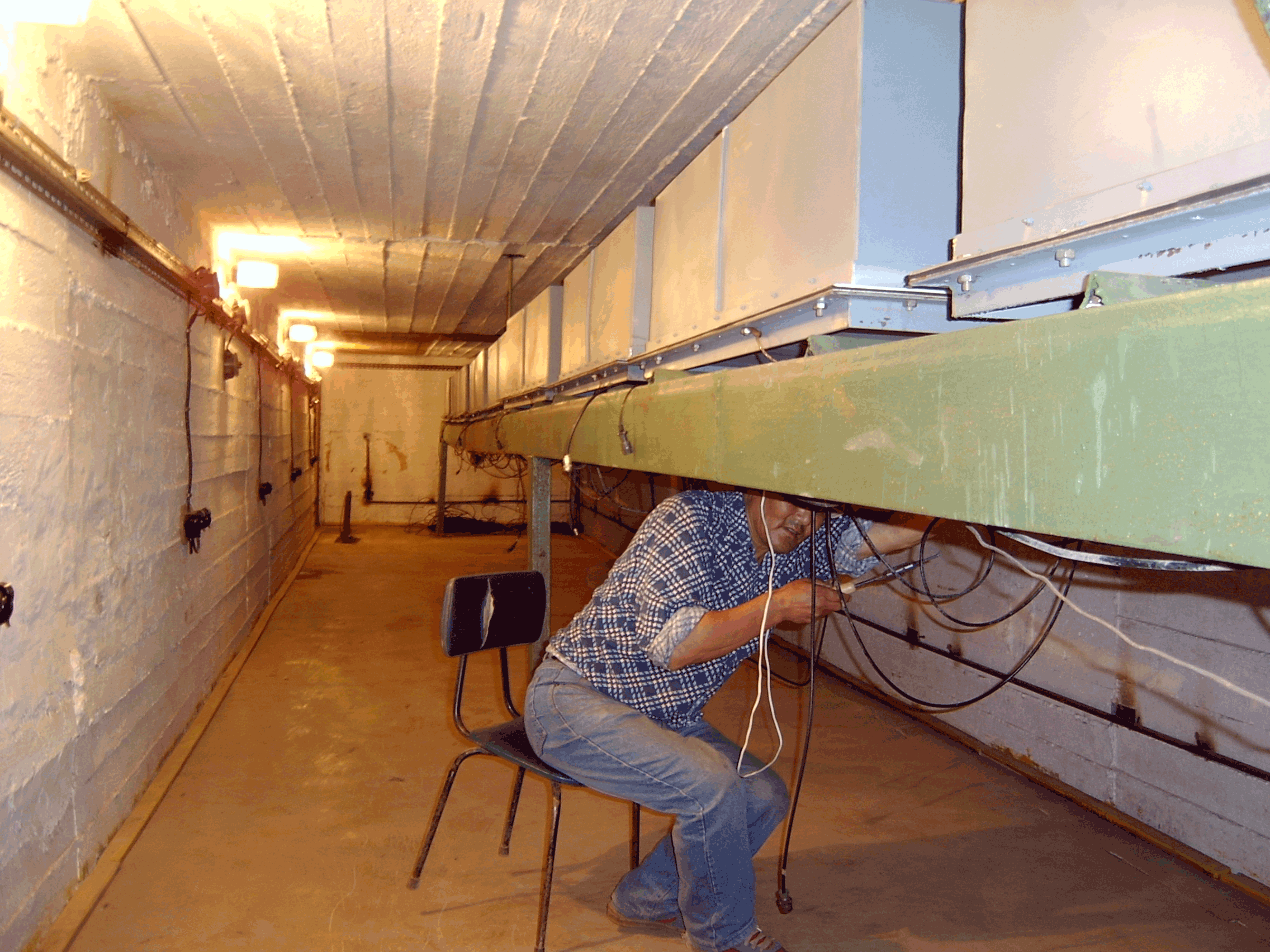
A large area detector of muons is added in 1994 consisting of 90´2 square meter standard plastic detectors. The threshold energy of muons is 0.5 GeV.
There are two kind of triggers to select showers from the background at the Yakutsk array: produced by the scintillators and by Cherenkov light detectors. In the first case a coincidence signal (if particle densities are greater than 0.5 m-2 in two scintillators of each station within 2 microseconds) passes on to the central controller. Trigger-500 is then produced in the case of coincident signal (in 40 microseconds) from three or more stations with ~500 m spacing (sixfold coincidence). Similarly, trigger-1000 is produced by ~1 km spacing stations. After 1992 when 18 new stations were added, the array area is increased from 2.5 km2 to 7.2 km2 where trigger-500 operates. The stations are connected by aerial lines and cables to the central processing unit.
